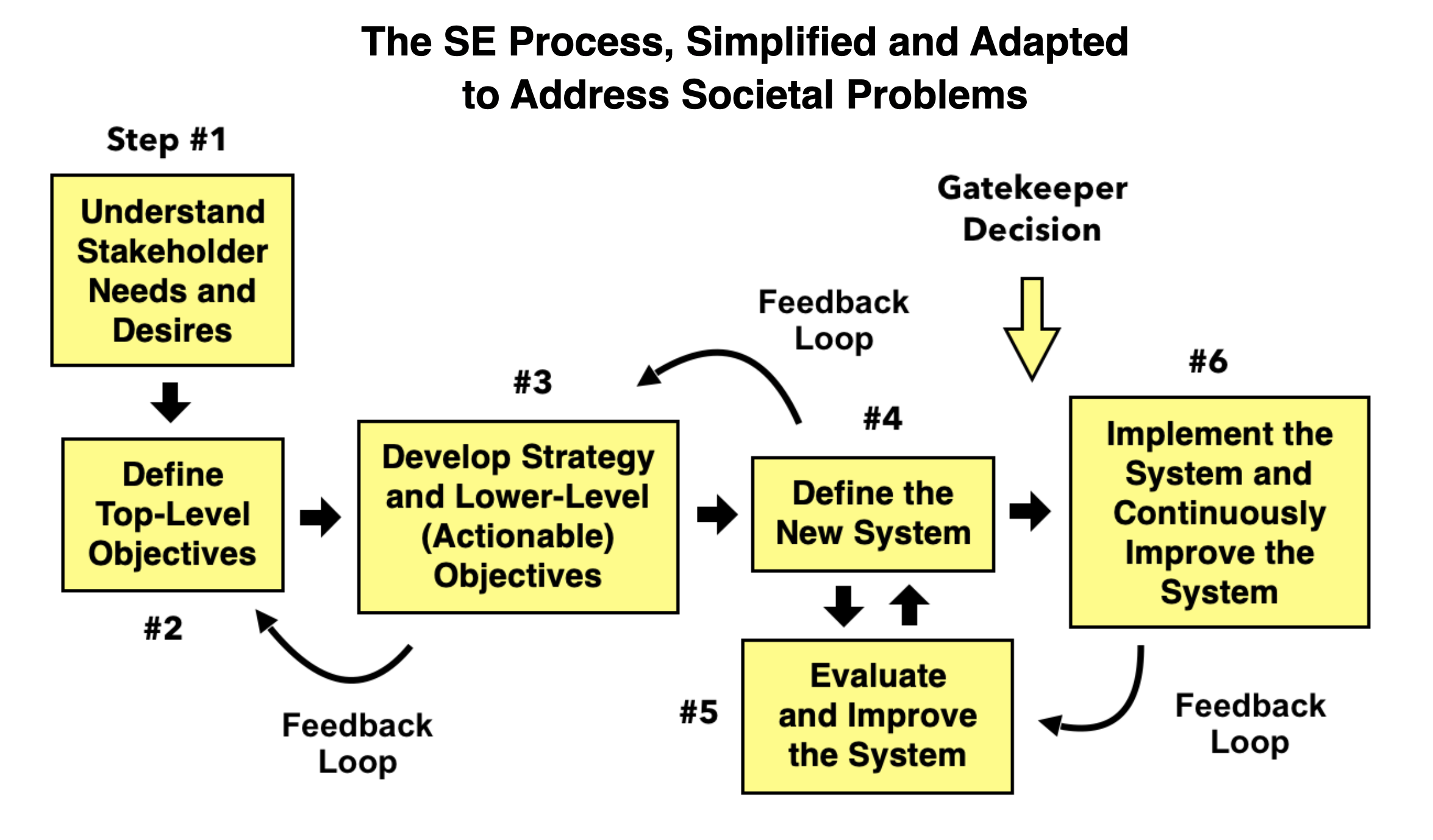The Systems Engineering Process
Systems engineering (SE) is a process engineers use to develop complex products and systems such as aircraft and spacecraft. Bell Laboratories first used the term SE in the 1940s. Since then, SE has continuously improved and been used successfully in engineering, technology, industry, and business. It is a core process for engineering, just as the scientific method is a core process for advancing science.
SE is an inherently nonpartisan process because it (1) considers the needs of all stakeholders and uses facts and data to optimize a product or system and (2) balances opposing interests, conflicting objectives, and many constraints.
I used systems engineering (SE) for nearly 40 years while working in the aerospace and energy industries. A common misconception is that SE is only valid on programs with little or no political pressure. My experience suggests that SE is also helpful in highly political programs like the International Space Station because it uses facts and data to help make decisions. This decreases the role of (sometimes irrational) political ideology in decision-making.
 The SE Process
The SE Process
Step #3 requires creative thinking to develop a strategy that achieves the top-level objectives and key stakeholder needs and desires. This forces one to reject ideological strategies that focus on just one or two objectives and develop a balanced approach that all stakeholders can support.
Steps #4 and #5 use the strategy developed in step #3 to define the new or improved system. To optimize the system, it is evaluated against the objectives, key stakeholder needs and desires, and other potential solutions. This forces one to consider alternatives, address deficiencies, and improve the proposed solution. Often, this leads to changes in the strategy developed in step #3.
Step #6 is implemented only after a gatekeeper (such as Congress and the president) approves the solution. To provide a check and balance, the gatekeeper must be different from the group developing the solution. The first five steps of the systems engineering process are repeated (ideally, as rapidly as practical) until the gatekeeper approves implementation. After a solution is implemented, the entire six-step process is repeated periodically to continuously improve it, using lessons learned from experience and new facts and data as they become available.
Systems engineering (SE) is a process engineers use to develop complex products and systems such as aircraft and spacecraft. Bell Laboratories first used the term SE in the 1940s. Since then, SE has continuously improved and been used successfully in engineering, technology, industry, and business. It is a core process for engineering, just as the scientific method is a core process for advancing science.
SE is an inherently nonpartisan process because it (1) considers the needs of all stakeholders and uses facts and data to optimize a product or system and (2) balances opposing interests, conflicting objectives, and many constraints.
I used systems engineering (SE) for nearly 40 years while working in the aerospace and energy industries. A common misconception is that SE is only valid on programs with little or no political pressure. My experience suggests that SE is also helpful in highly political programs like the International Space Station because it uses facts and data to help make decisions. This decreases the role of (sometimes irrational) political ideology in decision-making.
 The SE Process
The SE Process
Until now, SE has been used primarily to develop physical products and systems. However, I have developed a simple six-step process for using SE to create practical, nonpartisan solutions for complex social, economic, environmental, and political problems. This six-step process is shown in the figure and described in the following text.
Step #3 requires creative thinking to develop a strategy that achieves the top-level objectives and key stakeholder needs and desires. This forces one to reject ideological strategies that focus on just one or two objectives and develop a balanced approach that all stakeholders can support.
Steps #4 and #5 use the strategy developed in step #3 to define the new or improved system. To optimize the system, it is evaluated against the objectives, key stakeholder needs and desires, and other potential solutions. This forces one to consider alternatives, address deficiencies, and improve the proposed solution. Often, this leads to changes in the strategy developed in step #3.
Step #6 is implemented only after a gatekeeper (such as Congress and the president) approves the solution. To provide a check and balance, the gatekeeper must be different from the group developing the solution. The first five steps of the systems engineering process are repeated (ideally, as rapidly as practical) until the gatekeeper approves implementation. After a solution is implemented, the entire six-step process is repeated periodically to continuously improve it, using lessons learned from experience and new facts and data as they become available.

